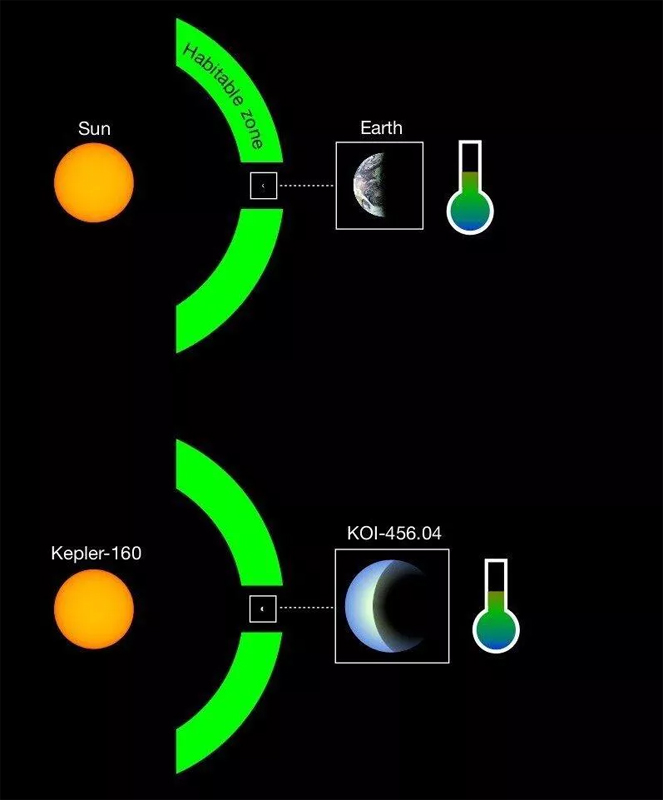
8th June 2020 Possible Earth-like planet found around Sun-like star Astronomers report that Kepler-160, a Sun-like star already known to host two planets, likely has a rocky third planet with orbit and light levels remarkably similar to Earth.
A new study from the Max Planck Institute for Solar System Research in Germany concludes that the Kepler-160 system has at least three planets, one of which is similar to Earth. The first two planets – Kepler-160 b and c, discovered in 2010 and confirmed in 2014 – sit close to their star with orbital periods of just 4.3 and 13.7 days, respectively. They are also quite large, with 2.99 and 12.7 Earth masses. However, the newly discovered third planet (KOI-456.04) is far more interesting. It has a very Earth-like orbital period of 378 days and receives 93% as much light as Earth gets. Because its parent star is notable for being the same class (G-type) as our Sun, with a similar mass (0.9) and size (1.1 solar radii), this would mean a likely surface temperature for the planet of around 5°C, a mere 10°C lower than Earth's global average, according to the astronomers. At 1.9 times the mass of our home planet, KOI-456.04 might be considered on the lower borderline of being a 'super-Earth', but could nevertheless have conditions suitable for life. Most exoplanets today are being found around red dwarfs, which are more variable and violent than their larger cousins and prone to occasional flare-ups that can render their planets uninhabitable, making this new discovery in a G-type system particularly exciting.
The study authors found this new planet by reanalysing old data from NASA's Kepler mission and incorporating a detailed physical model. Two new algorithms looked at the parent star's brightness and dimming patterns on a more granular and gradual level, rather than seeking the abrupt dips and jumps that had previously been used to identify exoplanets in the system. "Our improvement is particularly important in the search for Earth-sized planets," explains astrophysicist René Heller. "The planetary signal is so faint that it's almost entirely hidden in the noise of the data. Our new search mask is better in separating a true exoplanetary signal from the noise in critical cases." A fourth planet is also believed to be present. The researchers plan to use the PLATO telescope, set to become operational from 2026, to gain a clearer picture of each planet's orbit and composition. Located 3,140 light years away, the Kepler-160 system is unlikely to be visited anytime soon. Perhaps a future telescope may reveal direct images and possibly even biosignatures on the third planet. In the more distant future, with use of interstellar spacecraft, what sort of life might our descendants find on the surface? If any macro-scale organisms exist, they would likely be adapted to the high gravity – perhaps evolving into mostly flat, pizza-like shapes, with an absence of birds or other flying creatures. It is fascinating to imagine the possibilities. "KOI-456.04 is relatively large compared to many other planets that are considered potentially habitable," says Professor Heller. "But it's the combination of this less-than-double the size of the Earth planet and its solar-type host star that make it so special and familiar." His team's work is published this month in the peer-reviewed journal, Astronomy & Astrophysics.
Comments »
If you enjoyed this article, please consider sharing it:
|







